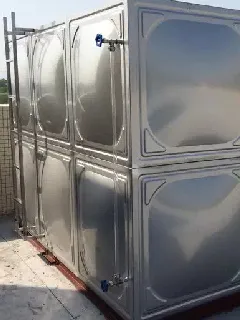loading...
- No. 9, Xingyuan South Street, Dongwaihuan Road, Zaoqiang County, Hengshui, Hebei, China
- admin@zjcomposites.com
- +86 15097380338
- Welcome to visit our website!
grp walkway grating
Exploring GRP Walkway Grating A Versatile Solution for Safe and Durable Walkways
In today's world, the need for safe and durable infrastructure is more crucial than ever. One innovative solution that has gained significant traction in various industries is GRP (Glass Reinforced Polymer) walkway grating. This material combines strength, resilience, and a lightweight design, making it an ideal choice for constructing walkways in numerous environments.
Understanding GRP Walkway Grating
GRP walkway grating is made from a composite material consisting of glass fibers embedded in a polymer matrix. This combination results in a product that is not only strong and durable but also resistant to corrosion, chemicals, and adverse weather conditions. The unique properties of GRP make it particularly suitable for environments where traditional materials like wood or metal would typically fail.
Benefits of GRP Walkway Grating
One of the standout features of GRP walkway grating is its lightweight nature. Compared to metal grating, GRP is significantly lighter, allowing for easier handling and installation. This can lead to reduced labor costs and construction time, making it an attractive option for projects with tight deadlines.
Additionally, GRP is inherently non-slip, providing a safe walking surface even in wet or slippery conditions. This characteristic is vital in industrial settings, where spills or exposure to water can create hazardous environments. By utilizing GRP walkway grating, employers can enhance worker safety and reduce the risk of accidents.
grp walkway grating

Another major advantage is GRP's resistance to corrosion. Unlike steel or aluminum, GRP does not rust or corrode when exposed to moisture, chemicals, or UV rays. This durability ensures a longer lifespan for the walkways, minimizing maintenance costs and downtime associated with repairs or replacements.
Applications of GRP Walkway Grating
GRP walkway grating finds applications in a variety of sectors, including industrial, commercial, and recreational areas. In industrial settings, such as factories or processing plants, GRP grating can be used for platforms, walkways, and access bridges, providing safe passage for workers and equipment. Its resistance to corrosive substances makes it ideal for chemical plants, water treatment facilities, and oil and gas industries.
In commercial settings, GRP grating is perfect for pedestrian walkways, shopping centers, and public parks. Its aesthetic versatility allows for various designs, ensuring that the walkways are not only functional but also visually appealing. For recreational areas, such as boardwalks and nature trails, GRP offers a sustainable option that withstands the elements while minimizing environmental impact.
Conclusion
With the growing emphasis on safety and sustainability, GRP walkway grating stands out as a versatile solution for a range of applications. Its combination of lightweight design, durability, and non-slip properties makes it an ideal choice for both industrial and commercial settings. As more industries recognize the benefits of GRP, it is clear that this innovative material will play a crucial role in shaping the future of walkways and public infrastructure. Choosing GRP walkway grating is not just a decision for immediate needs but an investment in long-term safety and reliability.
-
The Rise of FRP Profiles: Strong, Lightweight, and Built to LastNewsJul.14,2025
-
SMC Panel Tanks: A Modern Water Storage Solution for All EnvironmentsNewsJul.14,2025
-
GRP Grating: A Modern Solution for Safe and Durable Access SystemsNewsJul.14,2025
-
Galvanized Steel Water Tanks: Durable, Reliable, and Ready for UseNewsJul.14,2025
-
FRP Mini Mesh Grating: The Safer, Smarter Flooring SolutionNewsJul.14,2025
-
Exploring FRP Vessels: Durable Solutions for Modern Fluid HandlingNewsJul.14,2025
-
GRP Structures: The Future of Lightweight, High-Performance EngineeringNewsJun.20,2025
